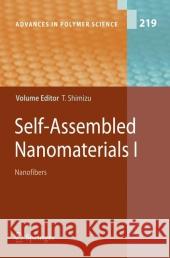Self-Assembled Nanomaterials I: Nanofibers » książka
Self-Assembled Nanomaterials I: Nanofibers
ISBN-13: 9783642098789 / Angielski / Miękka / 2010 / 175 str.
Self-Assembled Nanomaterials I: Nanofibers
ISBN-13: 9783642098789 / Angielski / Miękka / 2010 / 175 str.
(netto: 764,96 VAT: 5%)
Najniższa cena z 30 dni: 771,08
ok. 22 dni roboczych.
Darmowa dostawa!
Nanotechnology is the creation of useful materials, devices, and systems through the control of matter on the nanometer-length scale. This takes place at the scale of atoms, molecules, and supramolecular structures. In the worldofchemistry, therationaldesignofmolecularstructuresandoptimized control of self-assembly conditions have enabled us to control the resultant self-assembled morphologies having 1 to 100-nm dimensions with sing- nanometer precision. This current research trend applying the bottom-up approach to molecules remarkably contrasts with the top-down approach in nanotechnology, inwhichelectronicdevicesareminiaturizingtosmallerthan 30nm.However, even engineers workingwithstate-of-the-artcomputer te- nology state that maintaining the rate of improvement based on Moore s law will be the most dif?cult challenge in the next decade. On the other hand, the excellent properties and intelligent functions of a variety of natural materials have inspired polymer and organic chemists to tailortheirsyntheticorganicalternativesbyextractingtheessentialstructural elements. In particular, one-dimensional structures in nature with sophis- catedhierarchy, suchasmyelinated axonsinneurons, tendon, proteintubesof tubulin, and spider webs, provide intriguingexamples of integrated functions and properties. Againstthisbackground, supramolecularself-assemblyofone-dimensional architectures like ?bers and tubes from amphiphilic molecules, bio-related molecules, and properly designed self-assembling polymer molecules has - tractedrapidlygrowinginterest.Theintrinsicpropertiesoforganicmolecules such asthe diversity ofstructures, facile implementation offunctionality, and theaggregationproperty, providein?nite possibilities forthedevelopment of new and interesting advanced materials in the near future. The morpholo- cally variable characteristics of supramolecular assemblies can also function as pre-organized templates to synthesize one-dimensional hybrid nanoc- posites. The obtained one-dimensional organic inorganic, organic bio, or organic metal hybrid materials are potentially applicable to sensor/actuator arrays, nanowires, and opto-electricdevices. ThepresentvolumesonSelf-AssembledNano?bers(Volume219)andNa- tubes(Volume220)provideanoverviewonthoseaspectswithineightchapters











